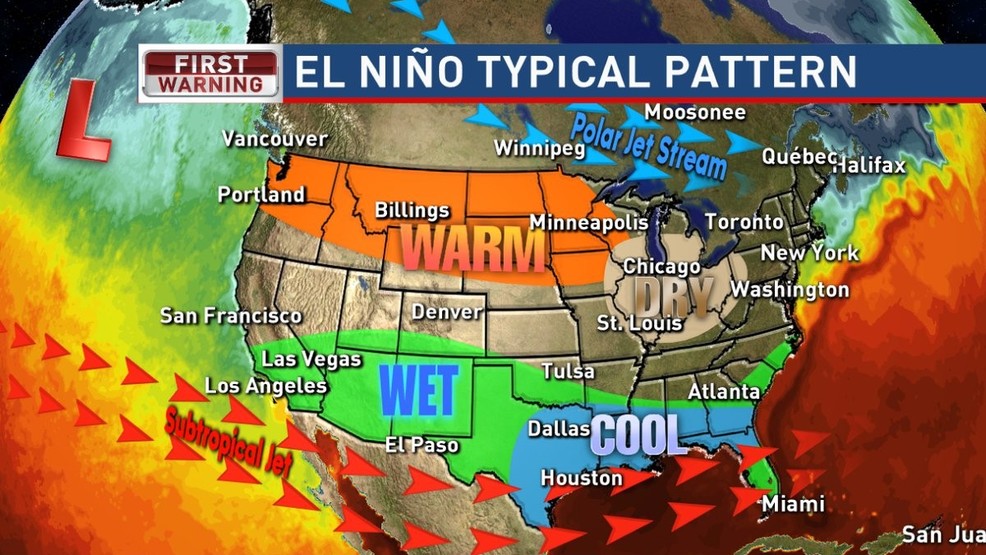

La Nina
Although La Nina means little girl, it is also called El Viejo, anti-El Nino, or “a cold event.” La Nina represents below average sea temperatures across the east-central Equatorial Pacific. El Nina episodes happen to be the complete opposite from El Nino’s impacts, as well as the ocean temperature variations. winter temperatures are warmer than normal in the Southeast and cooler than normal in the Northwest during a La Nina year.
El Nino
El Nino got its name because of the time of year it was (December) when the fishermen discovered its unusual appearance of warm water along the coast of South America. It means, the large-scale ocean-atmosphere climate interaction linked to a periodic warming in sea surface temperatures across the central and east-central Equatorial Pacific. The effects of El Nino could be developed over North America in the upcoming winter. Things such as warmer than average, wetter than average, and drier than average climates could occur in different places around the world. Climate patterns, ocean conditions, and marine fisheries across the world can be influenced by El Nino.
The Journey Begins
Thanks for joining me!
Good company in a journey makes the way seem shorter. — Izaak Walton
